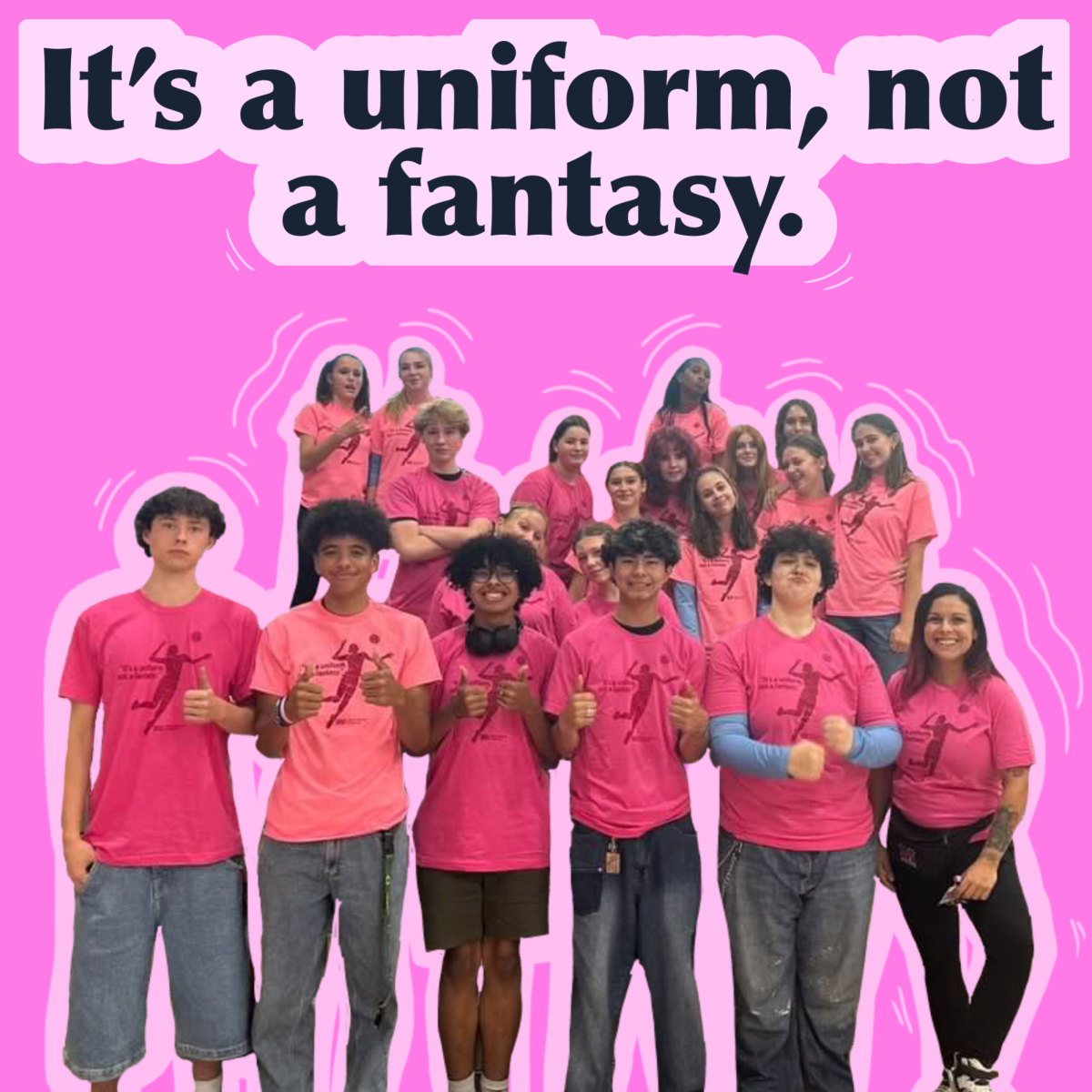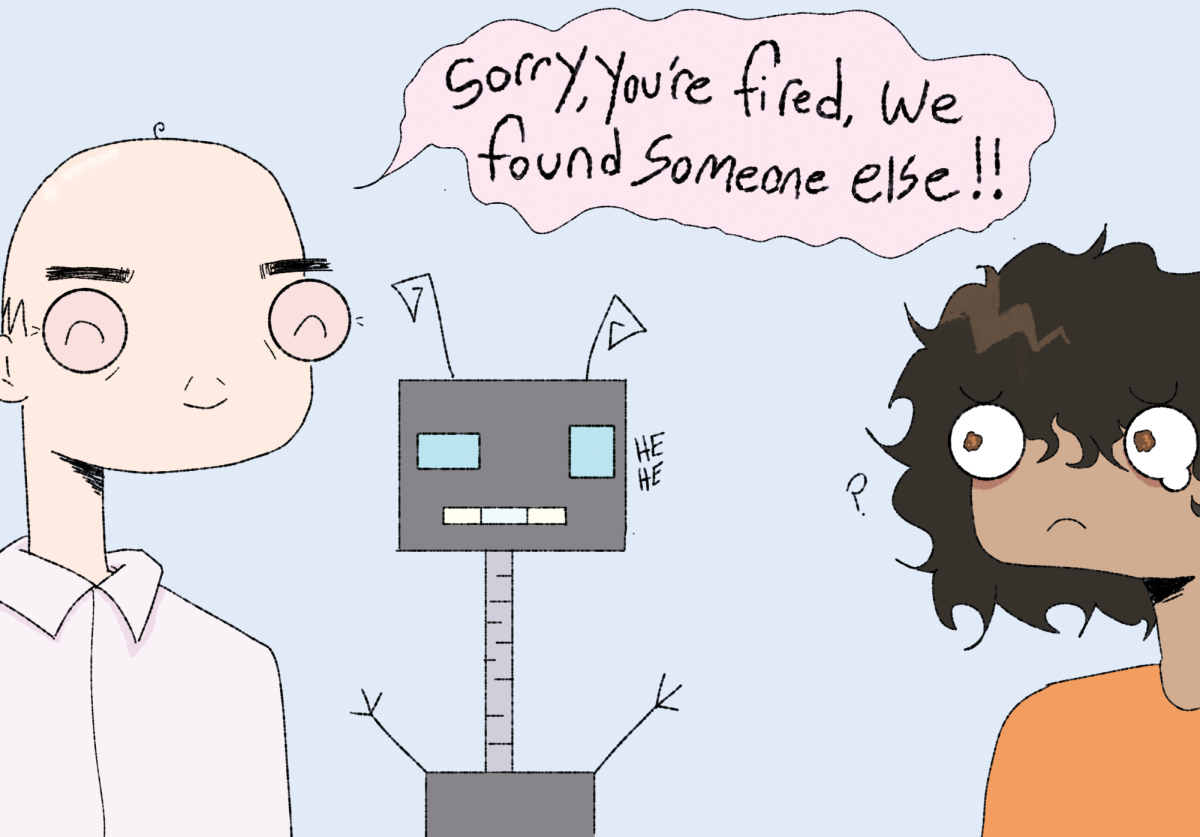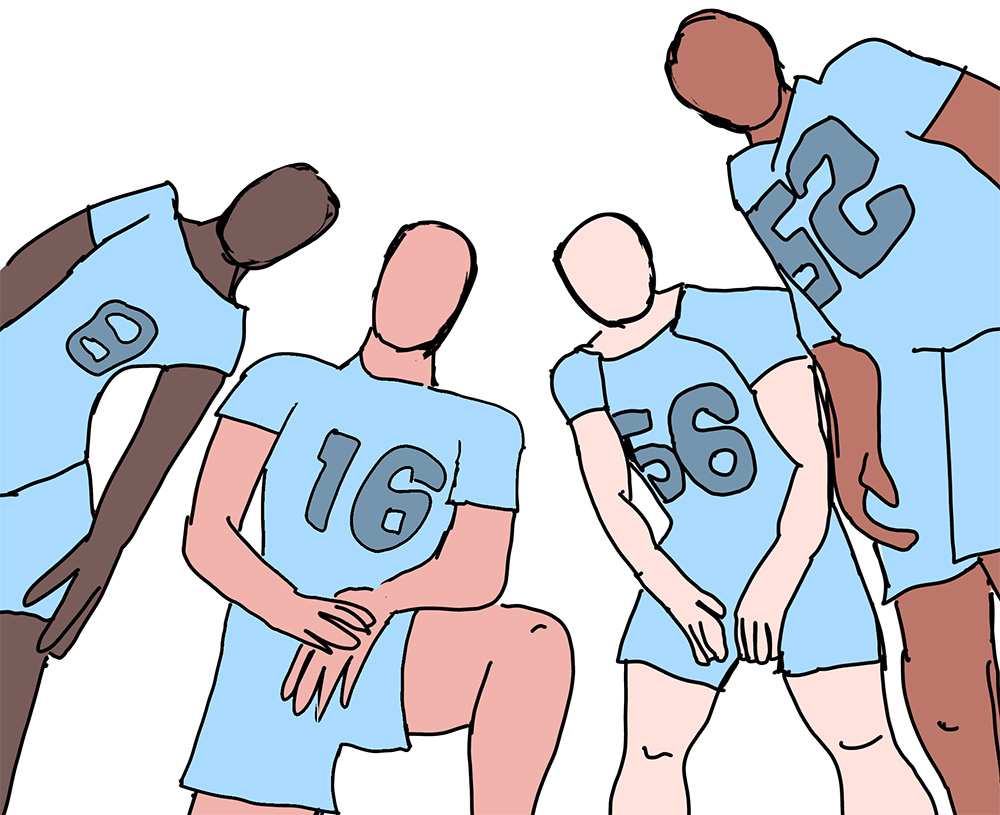You are walking down the hallway. You see someone with a pink shirt. It makes you stare a little longer. Long enough to see the writing on it. They say “It’s a uniform, not a fantasy.”
These shirts are popular and people should take notice because they send a valuable message to stop harassment. They’re easy to spot, as not only are they a flashy pink color, but they send an important message: harassment should not be tolerated at sporting events, especially if it distracts from the game itself.
The shirts stemmed from SAFER club brainstorming issues that they saw present in the community. Junior Anika Wright, who has been a part of the club since freshman year, shared that the group felt this was a big enough issue to take some sort of action. It’s good to have a club like this that can get involved in issues like these. Otherwise, the issue can go unnoticed and cause more problems.
They decided making the shirts was an achievable idea they could get done, so that when people went to the volleyball games, they looked at the student section and possibly thought twice about the words they used. This is a good idea because people are less likely to say degrading things about the players if an entire student section is protesting against that very thing.
Wright explained that the purpose behind the shirts is to encourage people to go to games to actually watch them, rather than the athletes’ bodies.
Senior Madison Schaefer has played on the volleyball team since freshman year. Schaefer explained that the team has dealt with issues of harassment, which have even escalated into harassing the opposing team.
She explained a situation where a couple of guys at the game were kicked out because of the level of harassment towards both teams. If people were to see a whole student section with these pink shirts, it could make them more aware of the harm they’re doing.
“I think that it gets the message across,” Schaefer said, referring to the shirts.
At the end of the day, it comes down to basic human respect, according to Wright.
“We’re just trying to play our sport,” Schaefer said.
If you plan on attending a future volleyball game, there are some few things you should know about etiquette. Players are there to play the game, and fans should bring all their attention to that, rather than physical aspects of the players.
“First off, we really love the fans, they’re part of the team because they bring the energy and support,” Schaefer said. “Mostly just remember we are trying to play our game and to be respectful to not only us, but the other team.”
According to Wright, there are rarely observations made about the game itself or how people are playing. It’s more about language centered around how the players look.
“I definitely think that people use the uniforms as an excuse to take away from the game,” Wright said. This thought makes sense, as when you start talking about the athlete’s physical appearance, you lose focus on the game itself, which should be the most important part. In many ways, this can downplay women’s sports as a whole.
As Wright said, the level of harassment that is at women’s games is not as prevalent at male sporting events, from her experience at both. The language is very different between the two.
Not all athletes can hear these comments, being that they are not in the stands; however, fans have pointed out that at male sporting events, everyone is focused on the game, how the team is playing, and strategies, while at female sporting events, people have mentioned being there to check them out.
“If it’s a boys team and they’re playing football or whatever, I just don’t really notice it a lot that people are like ‘oh look at her a**, what’s her snap?’” Wright said.
This shift in language between the two genders is something that also takes away from the game itself and can disturb both the players and other people in the audience. Fans should be more focused on the game, rather than pursuing someone.
Wright explained a personal experience she had with this harassment at a volleyball game.
“All I heard the entire time was just guys like ‘Oh look at her a**, look at what she’s wearing,’” she said.
Wright even remembers a specific event where she noticed a girl was walking back from a track meet, visibly crying and distraught, while some boys made remarks about her body.
Vice principal Keyla Santiago added her insight on the harassment at the games.
“When they say things, people around you are hearing it,” Santiago said. “There could be a little girl that hears a comment like that where you’re objectifying a person.”
This visual reminder helps people in the stands think twice before saying something that will impact those around them, such as younger children.
As the team’s season has ended, Schaefer claims that since the beginning of the season, the level of harassment has probably gotten a little better. This may be as a result of the presence of the shirts at the games, alongside the help of admin who have influence over people at the school.
Santiago explained her thoughts on the improvement.
“Not sure if the shirts made an impact in that way, but I feel like they helped build community within the game,” Santiago said.
According to her, it was cool seeing others wear them again, especially on senior night. Santiago also explains that she’s very proud of how the students showed up in support of the team this year. Having students come together as a team is something admirable and necessary when fighting an issue such as harassment.
Screen printmaking and graphic design teacher Randall Maves and business teacher Frank Fields helped print and design the shirts. It’s important to have members of the community involved in this, such as teachers, who can influence the students and staff around them to act on objects that may be sensitive or overall a challenge for some people to address.
The shirts made by the SAFER club are increasing awareness around the subject and helping the environment be free of harassment towards the players.









